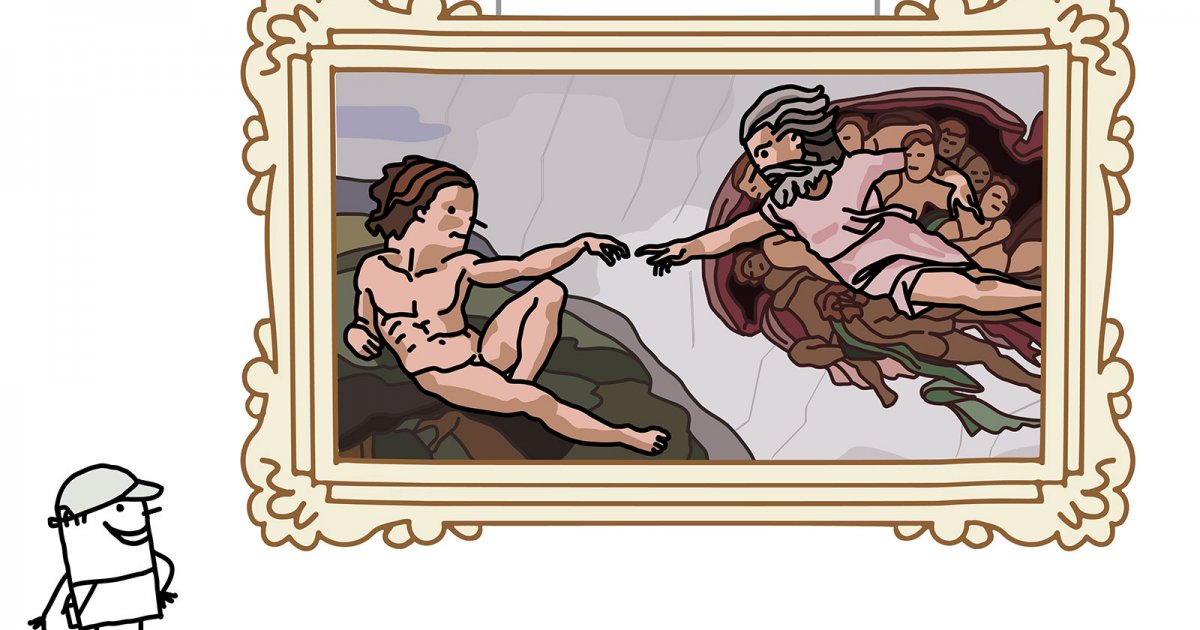SISTINE CHAPEL, Vault - General
 Language: English / USA
Language: English / USA
And now find a comfortable spot and look up: we're about to dive into one of the greatest artistic masterpieces of all time. I'm obviously talking about Michelangelo's frescoes. You are lucky enough to admire the frescoes after a very delicate cleaning, as they had been compromised after years of exposure to candle smoke; they are now just as bright as when they were originally painted, and you can take in all the magnificence of their colors.
As I mentioned, the vault was originally decorated with a starry sky, but at the beginning of the 16th century a crack formed in the ceiling and Pope Julius II had it repaired, after which the ceiling urgently needed to be repainted.
Pope Julius II della Rovere was the nephew of the same Pope Sixtus IV who had the Sistine Chapel built: he was ambitious, authoritarian, and impulsive, and wanted to leave a significant mark in the history of the Church. In addition to calling Raphael to fresco his private apartment and commissioning the reconstruction of the basilica to Bramante, the pontiff commissioned Michelangelo to paint the twelve Apostles in the corbels, which are the capital-shaped shelves, and simple geometric decorations on the ceiling. The project was way too banal for Michelangelo who, at the age of thirty-three, was already a living legend. While continuing to complain about the inconvenience of the task, as the pope wasn't offering him any payment and because he liked painting much less than sculpting, the master proposed a much more complex project to the pontiff.
Michelangelo conceived a cycle of frescoes that covers over a thousand square meters; simply by painting the normal, vaulted ceiling, he transformed it into an extremely complex architectural structure.
He painted the generations of Christ's ancestors on the lunettes above the windows, and scenes from the Old Testament in the pendentives. Instead of painting the requested Apostles, he painted seven Prophets and five Sybils, and next to the throne of each he painted two pillars to support a frame surrounding the center of the entire length of the ceiling. In turn, the frame is subdivided into nine alternately large and small rectangular areas that depict nine stories from the Book of Genesis in chronological order, starting from the area above the altar.
Between one section and another of the frame, above the pillars of the Prophets and the Sybils, you can see the figures of the young Ignudi on both sides.
FUN FACT: you'll notice garlands of oak leaves in various points in the ceiling. They are almost a "logo", as popes Sixtus IV and Julius II belonged to the Della Rovere family, and rovere in Italian is another word for oak.



